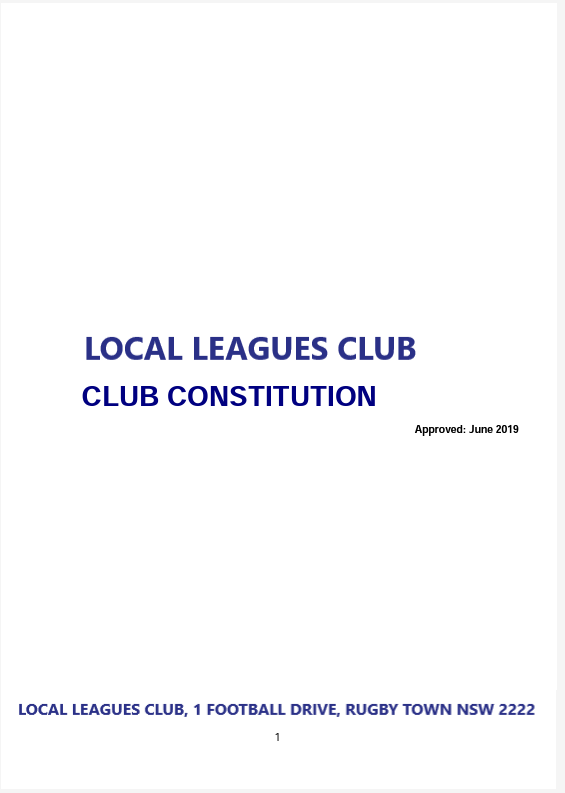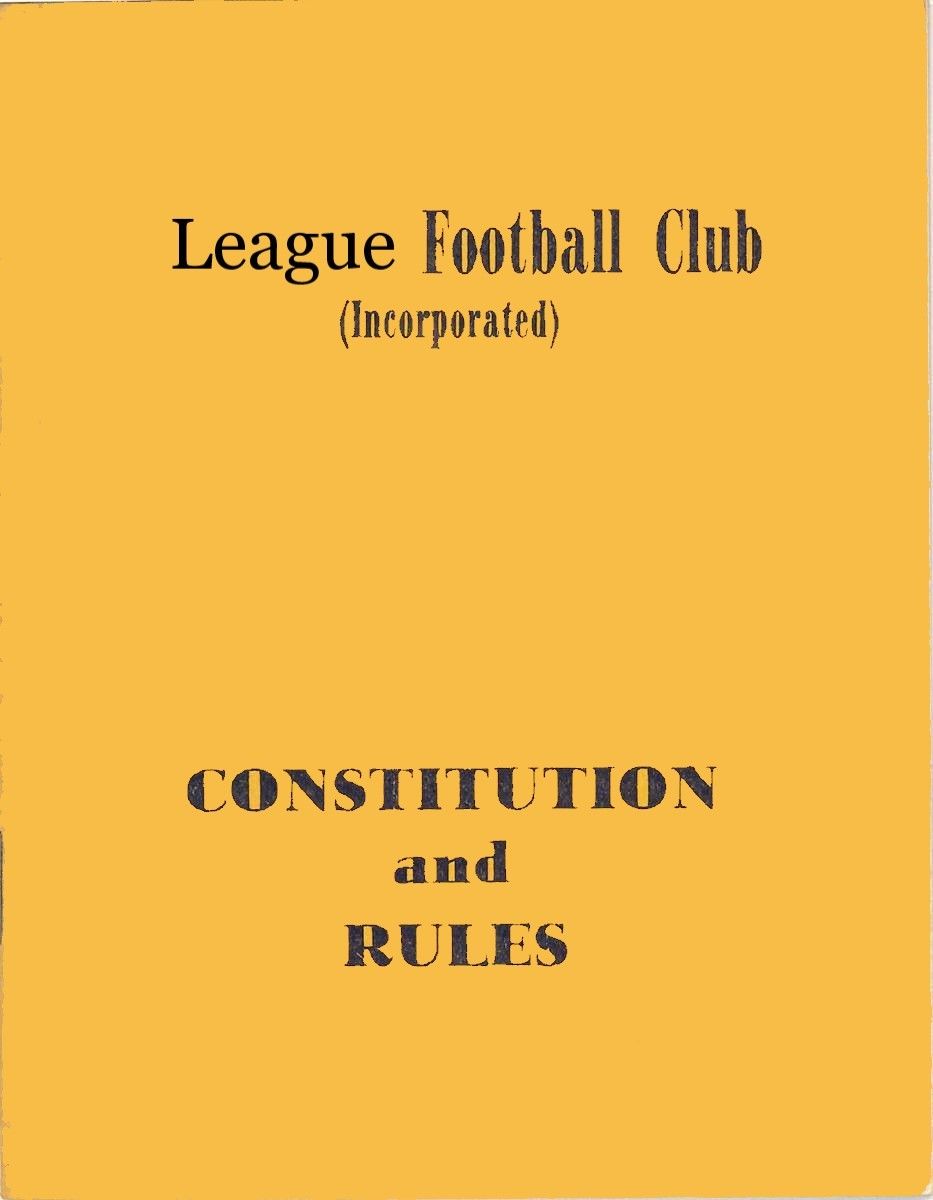Constitutions Rule!
When did you last review your club’s constitution?

When did you last review your club’s constitution? Pubs and restaurants don’t have to worry about a constitution, as they are usually run without a board of directors and members (who might need a set of rules to follow). Clubs, on the other hand, all have a constitution (company limited by guarantee) or Articles of Association (cooperatives or incorporated associations). These are the rules by which the club will operate.
Legislative change is the best driver of constitutional review, and there has been considerable movement in the Registered Clubs Act (RCA) in the past couple of years, precipitating a need to review your constitution, especially if you have not done so within the past five (5) years.
Some of the recent changes (in the past few years) include –
x No requirement to charge a minimum of $2.00 per member as membership fees;
x Removal of the obligation to hold a board meeting every month;
x The ability to appoint directors to the board who do not meet the club’s usual constitutional guidelines for election or appointment to the board.
We’ll look at each of those separately, however another issue is that of the attention to diversity – in all its forms. For example, is it time to adapt our constitutions to address gender fluidity, disability and sexual preferences e.g. LGBTIQA+' which is an evolving acronym that stands for lesbian, gay, bisexual, transgender, intersex, queer/questioning, asexual. Many other terms (such as non-binary and pansexual) are used by people to describe their experiences of their gender, sexuality and physiological sex characteristics.
What of membership categories? I often find it interesting that some constitutions recognise fully financial members as Associates, but often omit to have a ‘Full Member’ category. To me, an associate is not a full member, and as such would enjoy less benefits and access to the facilities of the club and be restricted in interaction with the board and potential to be a director.
Life Members are also another category that enjoys full membership benefits with the added benefit of being non-membership fee paying. Then there are the sporting membership categories especially in golf and bowls clubs. Member categories can be an issue when, for example ‘3 day members’ have different fees and access to ‘7 day members’ on a golf course. When did you last review your membership categories?
Let’s now revisit the legislative changes we noted earlier.
Changes to the legislation
x No requirement to charge a minimum of $2.00 per member as membership fees – this requirement was removed from the RCA in 2021 so that it is now up to clubs to decide if they need to charge a membership fee. Many clubs have just chosen to continue to charge the membership fee to add ‘perceived value’ to the membership of the club. Where the fees charged are specified in the constitution, it would require a special resolution to remove or amend the fees charged. Normally this would be in the By Laws of a club and as such at the discretion of the board and management to adjust or amend the membership fee.
x Removal of the obligation to hold a board meeting every month – The RCA previously mandated a board meeting be held every calendar month, with the day and time open to suit the directors, and for them to prescribe the day and time each month. It is now only mandatory to hold a board meeting a minimum of four (4) times per year. Most clubs have chosen to continue with the monthly frequency and would require a special resolution voted on by the members to change this requirement in their constitutions (75 percent plus 1 to pass).
x The ability to appoint directors to the board who do not meet the club’s usual constitutional guidelines for election or appointment to the board – since 2017, clubs have had the flexibility to appoint up to two (2) directors to the board, under the maximum cap of 9 Directors. This is to allow certain skills to be brought to the board room where existing members may not have those skills. The ability to appoint these directors overrides the club constitution’s standard election criteria for directors including years of membership and category of membership (e.g. must be a bowler or golfer or sub-branch member) that can be elected to the board.
These appointed directors can only be appointed for a maximum term of three (3) years, after which they need to stand for election if they wish to remain on the board. All of this, however, needs to be included in your constitution in order to be compliant with the legislation.
Once you have reviewed your constitution, ensure you have it reviewed and ratified by your legal counsel (e.g. Pigott Stinson, Thomson Geer or Elite Legal to name a few) before you socialise the changes with your members.
You may need to hold some member information sessions to inform the members of the changes required, allowing them the opportunity to discuss, challenge and digest the explanations as to why these changes are required. Once you have done this the changes need to be voted on by members at a General Meeting, with a quorum of members present who are eligible to vote (Full Members, Associates and Life Members) and voting. The pass percentage is 75 percent plus one to pass a special resolution.
On that point, whilst it may take longer to vote for, split each resolution into individual resolutions, to facilitate the approval process. If all changes are lumped into one resolution, if members really object to one change, the whole block of changes may get voted down. By offering individual resolutions for each change, then if the members conscientiously object to a single change, it can be voted down without negatively impacting the other changes required.
As always, I am not a lawyer, but do advocate a regular review of your constitution and then work with your preferred legal counsel to ensure you have met all the legislative requirements with which to align your constitution.
For more information contact Ron Browne ron@extrapreneurservices.com.au 0414 633 423 for a confidential discussion about the health of your constitution.










